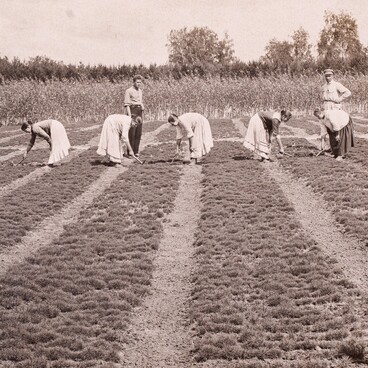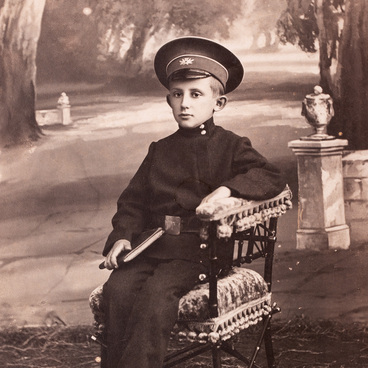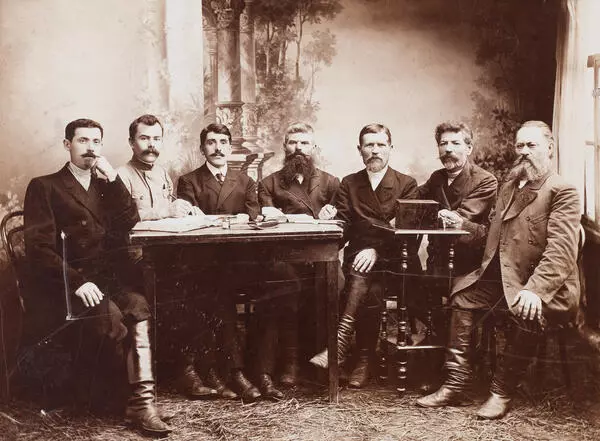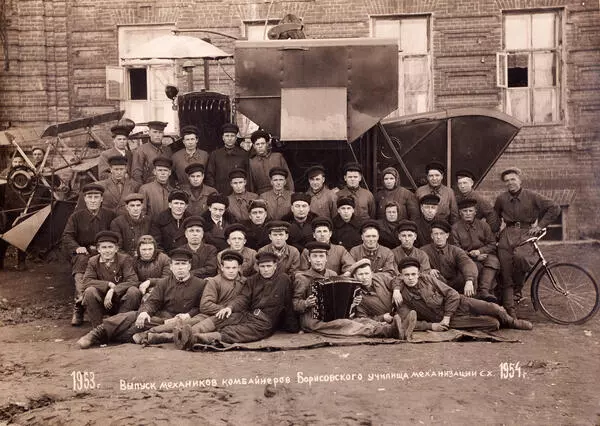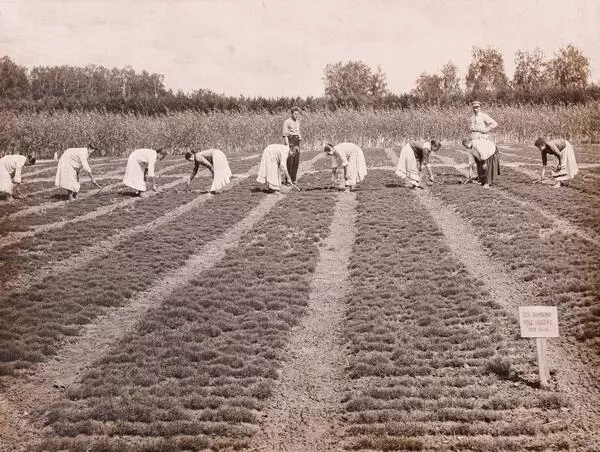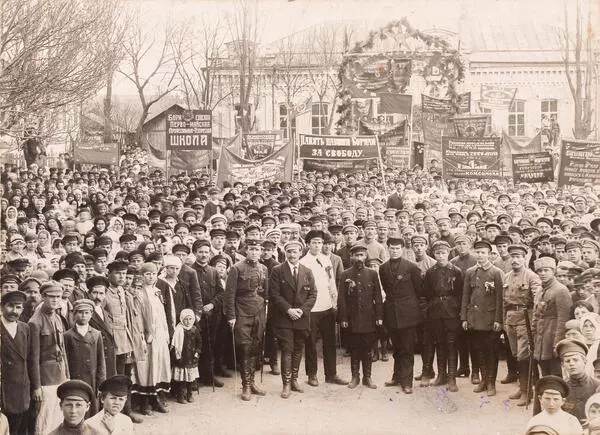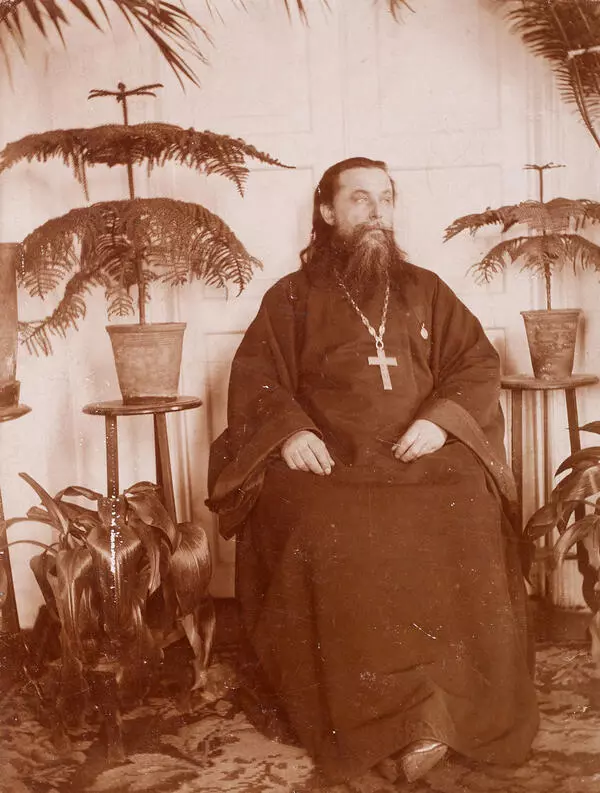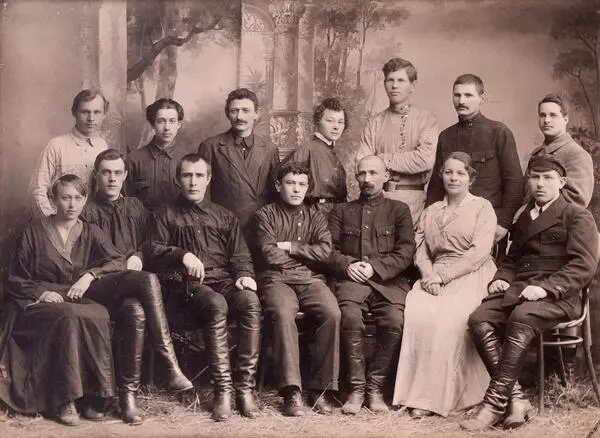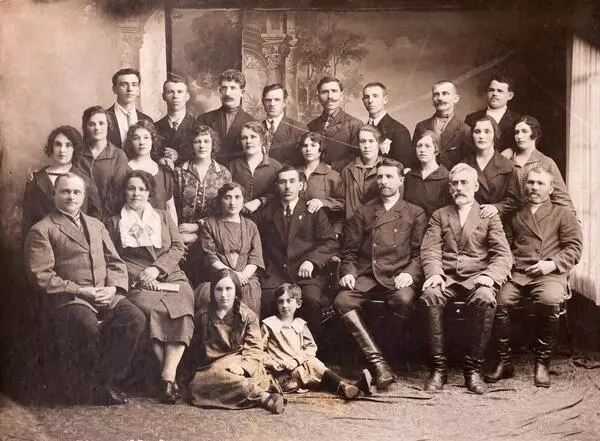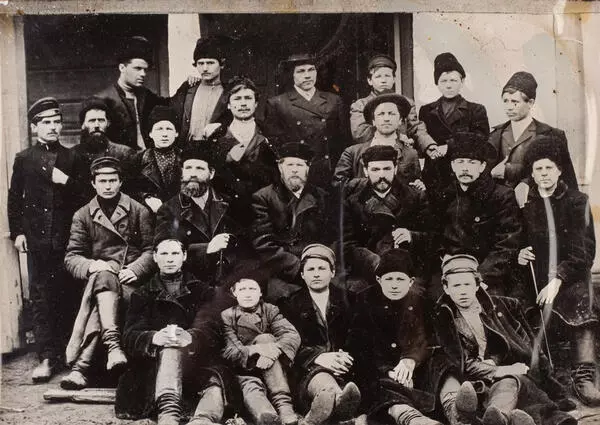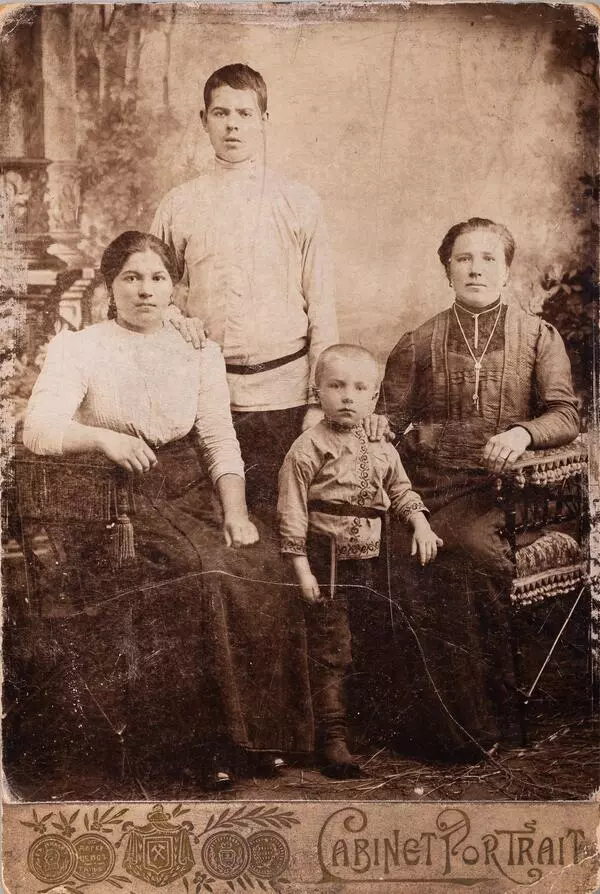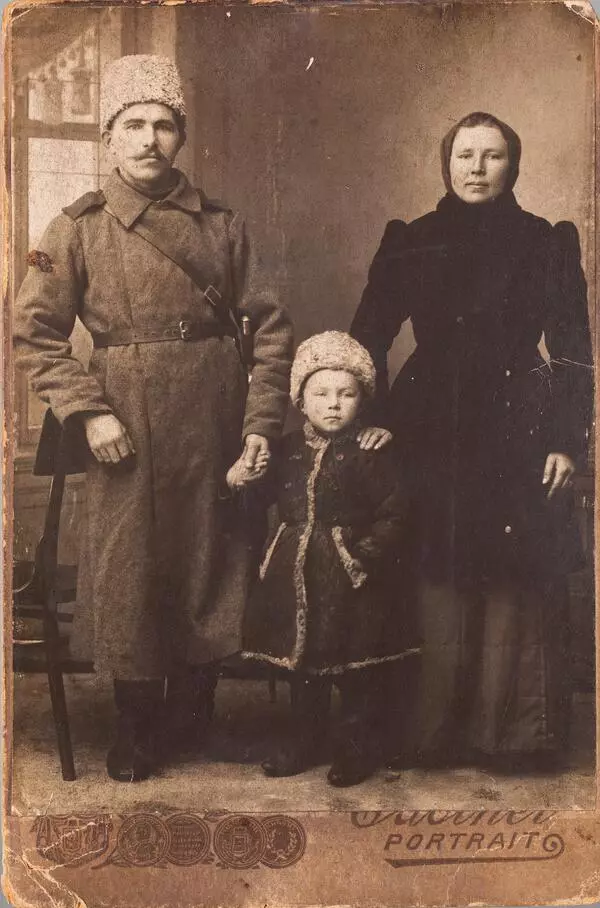The peak of the popularity of photo portraits occurred in the second half of the 19th — the early 20th century. The windows of fashion stores and studios were decorated with photographs of models in the latest outfits; photographs were hung on the walls along with paintings and given as mementos to loved ones. A high-quality framed photograph attached onto a mat — a thin piece of material included within a picture frame which features the logo of the studio — was rightfully considered a work of art.
During that very period, Grigory Vasilyevich Safontsev opened his photo studio in the Borisovskaya Sloboda. His works are to this day kept in family archives of Borisovka residents. Presently, they are valuable not only as family heirlooms, but also as historical artifacts.
The photo of E.N. Korenyok helps to understand the women’s fashion of the 1910s. The outfits of that time are characterized by soft, fluid outlines that emphasize a feminine figure. The shortened skirts were replaced by skirts of “prudent” length — up to mid-calf to wear in the afternoon and to the floor in the evening (however, evening dresses featured large cutouts on the back). Women who could not afford a new wardrobe, but wanted to look proper, lengthened the hemlines with ribbons, wedges and frills. Dresses were elegantly cut to fit the female torso; the outfits were decorated with flounces, ruffles, bows and various types of draped elements with slight asymmetry. Fabrics were dyed or had an unobtrusive geometric pattern. One-piece garments were tied at the waist with a narrow belt. Accessories were an indispensable part of one’s outfit and at the same time an affordable way to meet the fashionable requirements: narrow flap bags without a handle or “purses” with a silver or plastic plate-shaped snaps. Precious stones were always combined with artificial ones.
Short hairstyles for women came into fashion only in 1914, until that time ladies wore exclusively long hair in various styles. With her hair down, a woman could only appear on a stage performing a specific role. The same applied to makeup: bright lipstick, eye shadow and eyeliner were used as elements of theatrical makeup. In everyday life, women used only light powder and blush. In any photo studio there were universal background options: with landscapes or architectural buildings in the classical style. The presented photo also shows a lady captured against the background of such a landscape.
During that very period, Grigory Vasilyevich Safontsev opened his photo studio in the Borisovskaya Sloboda. His works are to this day kept in family archives of Borisovka residents. Presently, they are valuable not only as family heirlooms, but also as historical artifacts.
The photo of E.N. Korenyok helps to understand the women’s fashion of the 1910s. The outfits of that time are characterized by soft, fluid outlines that emphasize a feminine figure. The shortened skirts were replaced by skirts of “prudent” length — up to mid-calf to wear in the afternoon and to the floor in the evening (however, evening dresses featured large cutouts on the back). Women who could not afford a new wardrobe, but wanted to look proper, lengthened the hemlines with ribbons, wedges and frills. Dresses were elegantly cut to fit the female torso; the outfits were decorated with flounces, ruffles, bows and various types of draped elements with slight asymmetry. Fabrics were dyed or had an unobtrusive geometric pattern. One-piece garments were tied at the waist with a narrow belt. Accessories were an indispensable part of one’s outfit and at the same time an affordable way to meet the fashionable requirements: narrow flap bags without a handle or “purses” with a silver or plastic plate-shaped snaps. Precious stones were always combined with artificial ones.
Short hairstyles for women came into fashion only in 1914, until that time ladies wore exclusively long hair in various styles. With her hair down, a woman could only appear on a stage performing a specific role. The same applied to makeup: bright lipstick, eye shadow and eyeliner were used as elements of theatrical makeup. In everyday life, women used only light powder and blush. In any photo studio there were universal background options: with landscapes or architectural buildings in the classical style. The presented photo also shows a lady captured against the background of such a landscape.


